Ludolf Leendertsz de Jongh
Paintings
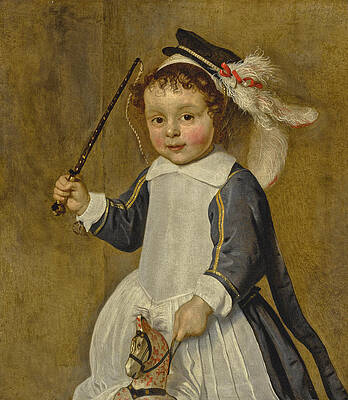
Portrait of a Young Boy on a Hobby Horse, Three-Quarter Length
An Interior with a Maid holding a Jug and Three Men beside a Fire
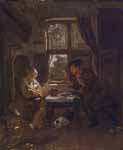
Family scene in front of an open window

Aletta van Ravens (1635-77). Wife of Jan van Nes
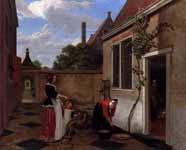
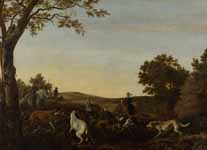
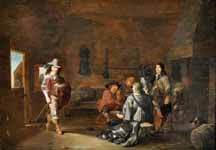
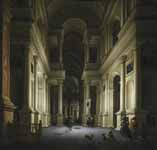
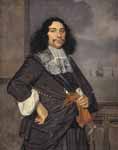
Portrait of Jan van Nes (1631-1680)
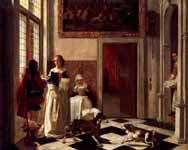
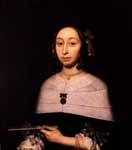
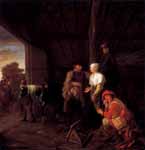
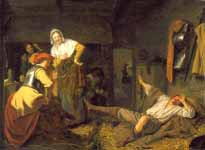
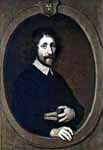
Portrait of Willem de Swaen (1607 / 1608-1674), priest in Gouda
Ludolf Leendertsz de Jongh or Ludolph de Jong (Overschie, 1616 – Hillegersberg, 1679) was a Dutch Golden Age painter, and member of the vroedschap.
Biography
De Jongh was the son of a shoemaker, who hit him with a belt. When his father moved to Rotterdam, the young Ludolf decided to learn art rather than shoemaking, and became a pupil of Cornelis Saftleven. Later he studied under Anthony Palamedes in Delft, and later still with Jan van Bijlert in Utrecht.[1]
In 1635, he travelled to France with Frans Bacon. Seven years later, in 1642, he returned to the Netherlands when he heard that his mother had fallen ill. He set up shop in Rotterdam, and his earliest signed paintings date from that year. According to Houbraken his travels had caused him to speak French so fluently, that his parents had to learn French in order to speak with him. De Jongh's work shows a strong influence from the Utrecht school of Caravaggio admirers, especially Jacob Duck, but also from Pieter de Hooch. In 1650's he was one of the most fashionable painters of Rotterdam. He experimented with various innovations in portraiture in this period, both from a psychological perspective with expressions, but also with the use of space and lighting. He married the daughter of a member of the highest circles of Rotterdam, Pieter Montagne, and was granted a rank of major in the schutterij, that he fulfilled until 1697, the year he died.
From 1660 onwards he painted less, and this may have been due to his responsibilities as a major, as a merchant, and later, as magistrate in Hillegersberg. He did paint a schuttersstuk, however, which Houbraken saw in the target practise hall in the next century.
References
Ludolf de Jong biography in De groote schouburgh der Nederlantsche konstschilders en schilderessen (1718) by Arnold Houbraken, courtesy of the Digital library for Dutch literature
Ludolf de Jongh (The Getty)
----
Fine Art Prints | Greeting Cards | Phone Cases | Lifestyle | Face Masks | Men's , Women' Apparel | Home Decor | jigsaw puzzles | Notebooks | Tapestries | ...
----
Artist
A - B - C - D - E - F - G - H - I - J - K - L - M -
N - O - P - Q - R - S - T - U - V - W - X - Y - Z
Retrieved from "http://en.wikipedia.org/"
All text is available under the terms of the GNU Free Documentation License



